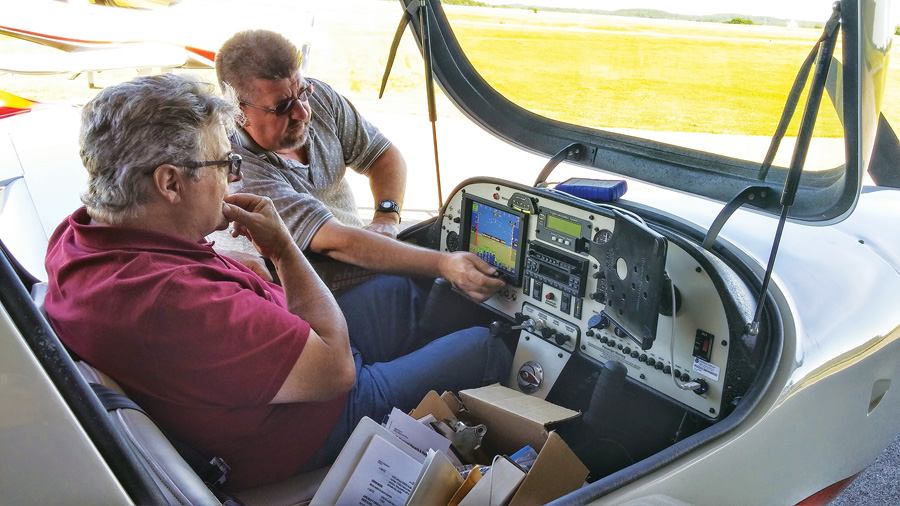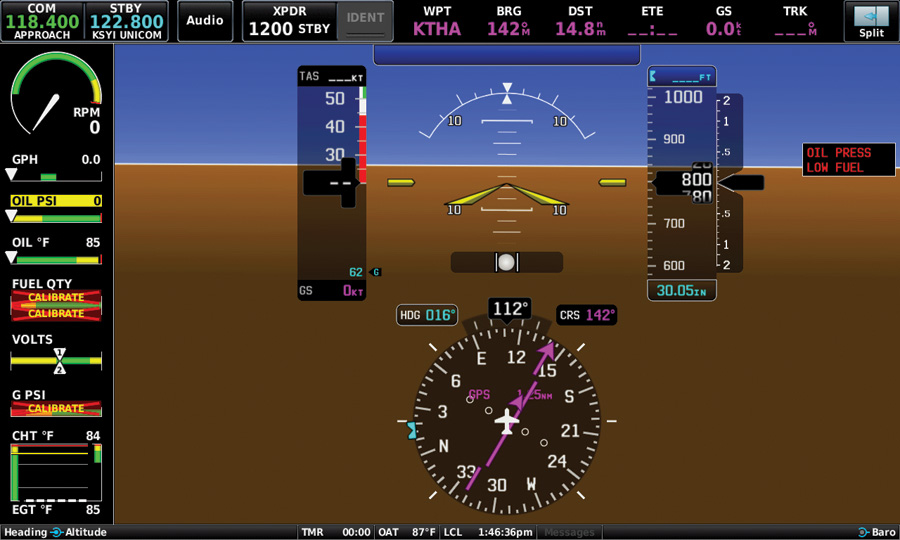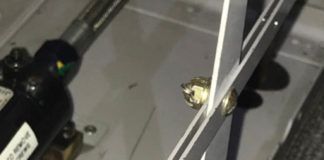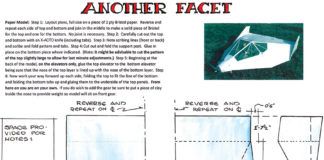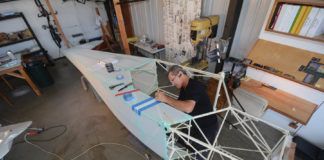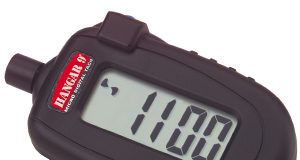You’ve spent five years building your airplane, and now you’re climbing away from the runway on your first flight. Woohoo! You’re trying to remember what climb airspeed to use from your transition training three months ago. You think it was 75 knots, but in your adrenalin-crazed visual scan, you can’t find the airspeed indicator on the crowded glass panel display. You think it’s the left vertical tape, but your brain isn’t seeing an airspeed needle, so it’s not processing what the rolling digits really mean. A yellow light keeps blinking on the screen. Maybe you should have taken the extra time to calibrate your fuel probes before the first flight. Is that it? The warning light turns red. Wait—is it terrain? There’s a growing vibration under the floorboards and you’re having trouble holding the wings level because the airplane seems out of rig. Is it the engine? Where’s the tach, anyway? What should you do? You don’t even know your altitude!
Obviously, the time to learn how to use a glass cockpit EFIS (Electronic Flight Instrument System) is before your first flight. This is not something to blow off lightly. Airline pilots train for weeks when they transition to glass. But how can you make the switch, and where do you start? Aside from the obvious answers of finding a good transition CFI and downloading manufacturers’ manuals and training materials, here are some ideas for making the move from steam gauges to glass.
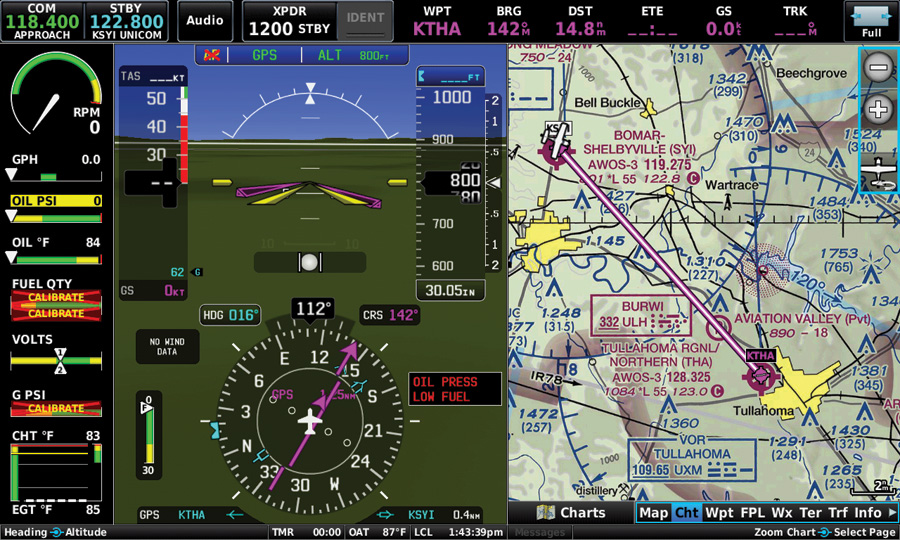
Feeling overwhelmed? Take a breath. In under two minutes, the G3X Touch display can be boiled down from feature-rich brain chaos (above) to the pure essentials for safe local flight (below). Now, isn’t that relaxing?
Study Now, Buy Later
Ideally, your training should start before you ever whip out the plastic to buy your new system. One of the best things you can do for yourself is to travel to one of the big shows like AirVenture or Sun ‘n Fun, and spend time at every Experimental EFIS manufacturer’s booth. Don’t just ask the sales people about features, pricing, and shipping dates. Find out how to do common tasks in the airplane, from setting the altimeter to tuning remote radios. If your airplane is to be IFR capable, ask how to load and activate an instrument approach. You might even be able to talk to a product development engineer for in-depth tech questions. With enough button pushing, one system will just make more sense to your brain, while others might seem non-intuitive or require too many button presses. For a quick comparison of what’s available, you can see multiple manufacturers’ screens at once by visiting the booths of professional panel builders such as Aerotronics and SteinAir.
One thing you will learn in the vendors’ booths is that as long as you stay out of the setup menu pages, you don’t have to be afraid of breaking the box by pushing the wrong button. Screen swiping and button pushing is the best way to learn how it works. If you do get stuck, the sales people will be there to show you how to get back to a familiar screen.
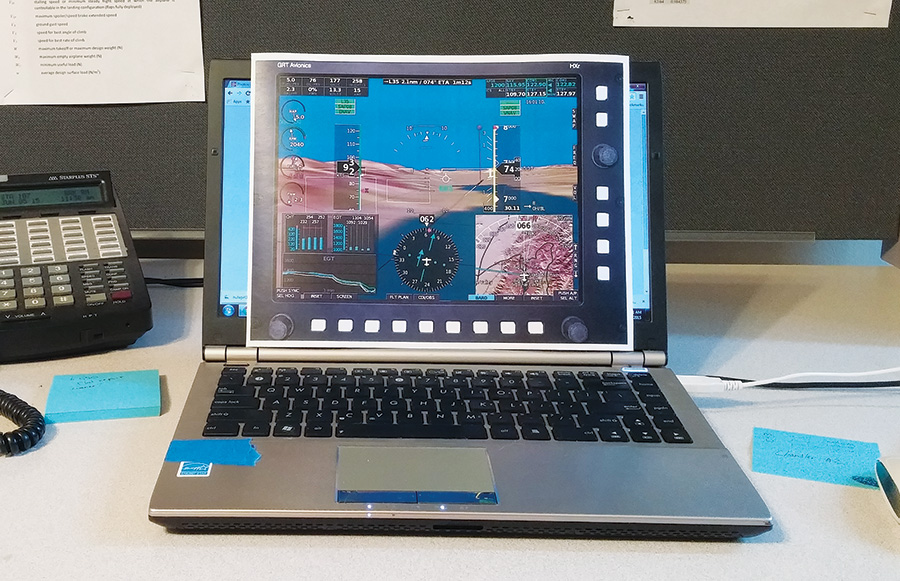
Placing a full-size photo of your EFIS over your computer screen can be a really effective training tool—and a surefire way to annoy your boss.
Buy Your Flying Buddy Breakfast Somewhere
Flying buddies are more than just hangar-flying tale spinners. They can be your best ally in the mission of designing your new panel. Of course, everyone wants to think the EFIS they bought is the stuff. But if you have a friend that has one, see if you can get into the air with them to try it out. Have them show you how it works, how they like to use it, and what they don’t like about it. You might just fall in love with it—and maybe your friend will help you wire it, too.
Get an iPad
You can learn the basics of moving maps, charts, ADS-B weather, and even a primary flight display by using an iPad or Android tablet with a good flight planning app such as WingX, ForeFlight, or the free Avare for Android. Use some caution, though—while it may help you feel more comfortable with electronics, don’t get too set in your screen swipes. While some skills will transfer to your EFIS user experience, others will interfere with it. Your EFIS will have different controls, so be prepared to unlearn some habits.
Chair Flying
You may feel like a dweeb doing this, but I’m telling you, it works. It’s a proven technique used by rookie airline pilots in late-night study sessions during initial company training—you know, those intense, drink-from-a-fire hose, pass-or-go-flip-burgers kind of classes. Most EFIS manufacturers offer full-size color PFD (Primary Flight Display) pictures or panel planners. Tape one on your computer screen at work—or better yet—your instrument panel and visualize yourself flying the airplane by the tapes. Train your eyes to follow the new instrument scan: airspeed, altitude, heading, with attitude in the background. Close your eyes and point to the different data boxes, including the engine instruments and active GPS waypoint, until you know exactly where they are. This way, you can actually accomplish something when you sit in your unfinished fuselage and make airplane noises. (Tell your spouse not to worry; it’s perfectly normal…Really.)

Even with an EFIS, it’s nice to have backup. In addition to round gauges, the hula girl in this RV-6A serves as a slip/skid indicator, vibration gauge, and turbulence monitor. When her skirt hides her ukulele, the plane is pulling some serious negative Gs!
After Installation, Simplify
If you can, turn off extra features that are not necessary for local flying. Sometimes the manufacturers get so caught up in including every possible feature, they end up with a crowd of data on the screen that will make your eyes cross. Whether you’re upgrading your existing airplane or building a new airplane, you will likely stay local for the first few flights. Pick one screen layout as your primary home screen and boil it down for simple VFR local flying: airspeed, altitude, heading, slip/skid ball, distance from the airport, and critical engine gauges. Know how to acknowledge any warnings and how to get back to your home screen if you do press any buttons. Once you’re comfortable flying the airplane with the basics, you can start turning on extra features one or two at a time.
Quiet Time on Trickle Charge
If you have a trickle charger, it will be your best friend during this time of intense learning. Why burn a tank of avgas when you can park the plane near the open hangar door (for GPS reception), plug in the trickle charger, and sit in front of your EFIS punching buttons or swiping the touchscreen? Grab your EFIS user guide and checklist and go to work. Enter and manipulate flight plans, turn features on and off, and get to know your system without the stress and expense of trying to fly the plane at the same time. Ideally, do this before you even fly it.
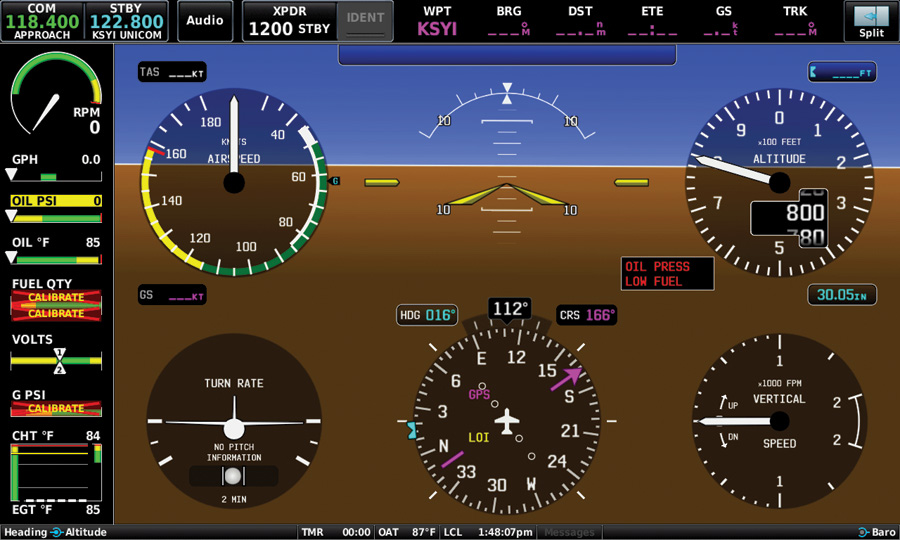
The round dial screen might make you feel more at home, but give the tapes a chance. After a few hours, you’ll probably like them better.
Know Your Systems
Know the limitations of your system inside and out. If you install it yourself, you will already know how it’s wired, but you might not know how each component relates to the others. This information is critical if you fly IFR, and it should all be found in the installation or user manuals. What instruments are affected by the loss of GPS or the magnetometer? Will the attitude indication go bad if the pitot tube is blocked? Do you have an emergency backup battery? If so, how is it activated, and how long will it last? If one screen fails, what avionics will you have left? Will the autopilot keep working if either screen fails? All of these are important questions to ask as you design your panel. The answers will help you prioritize your electrical power or navigate home if the stinky stuff ever hits the fan. Personal weather minimums, risk management, and smart aeronautical decision making are beyond the scope of this article, but they will also tie into these questions as you begin flying cross-country.
No Shortcuts Before the First Flight
If you have an engine problem in your new airplane, it will likely happen in the first few hours, and your engine monitor is the first and best source of potentially life-saving information. It’s critical that all electronic functions work on the ground before first flight, especially engine and flight instruments. If it’s lit up with false warnings all the time, you won’t be able to tell when you have a real warning. Connect all the probes to the engine monitor, program them if necessary, and test them out on the first taxi runs. Fuel quantity senders should be calibrated before flight to avoid unnecessary warning messages. GPS is usually important for attitude data and other EFIS calculations, so even though you’re going to stay local, make sure the antenna is properly installed.
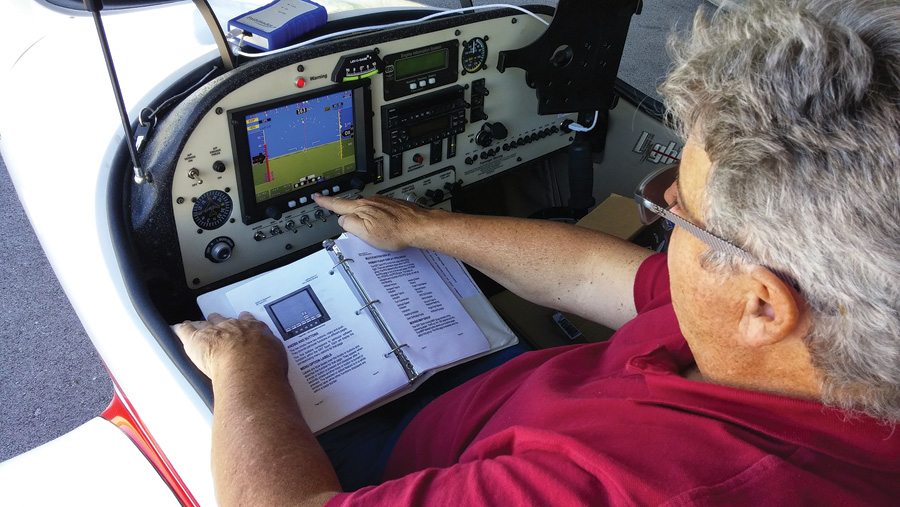
Park your plane near the open hangar door (for GPS reception), and get to know your system without the stress and expense of trying to fly the plane at the same time.
Allow Your Brain Time to Cope
If you’ve spent a lot of time flying on round dials, your brain will need some time to adjust to the digital readout of the airspeed and altitude tapes. I only had about 250 hours total time when I switched from round dials to Garmin G1000 glass, but I found myself glancing up at the analog backup airspeed indicator on final approach just to be sure. I realized that my instrument scan on final approach had relied upon a needle position, not the actual number on the dial, so it took my brain a few hours to get used to interpreting the digital readout. Because the digital airspeed is sensitive and can fluctuate, you may find yourself chasing one particular number. Stop that—just trim the airplane and relax! Your old analog needle was about 3 knots wide on the dial anyway, so shoot for a block of airspeed instead of a single number. If your approach speed is 57 knots, then keep it as steady as you can between 55 and 60. You will be less likely to overcontrol your pitch on the way down the approach path, and therefore more stable and less stressed-out.
Some EFIS manufacturers offer a round-dial primary flight display view as an alternative to the digital tapes. If you are really frustrated with the tapes, switch over to the round-dial screen for a while and see if it helps you to relax. Be sure to try the tapes, though. They were designed to have a smaller scan area that allows your brain to quickly interpret trends of motion. Round dials are more compartmentalized and actually require more work to scan.
Old Dogs Can Get It Done
I don’t have to tell you all the advantages of a glass cockpit. The EFIS manufacturers have been preaching that stuff for years. The thing you should realize is that no matter how old you are or how long you’ve been flying round dials, you can learn a glass panel. You might never use all the features…and that’s perfectly OK. Once you get comfortable using the new tools made possible by this amazing technology, flying will be more fun—and safer—for you in the long run. Just break it into manageable chunks, and like everything else you’ve learned in aviation, practice it one flight at a time.
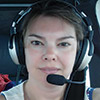
![]()
Katie Bosman Krotje is a commercial pilot, CFI, and technical writer for a Light Sport Aircraft company in Tennessee. She holds a master’s degree in aerospace education and is well into the throes of rebuilding a tornado-tossed Van’s RV-3B.

